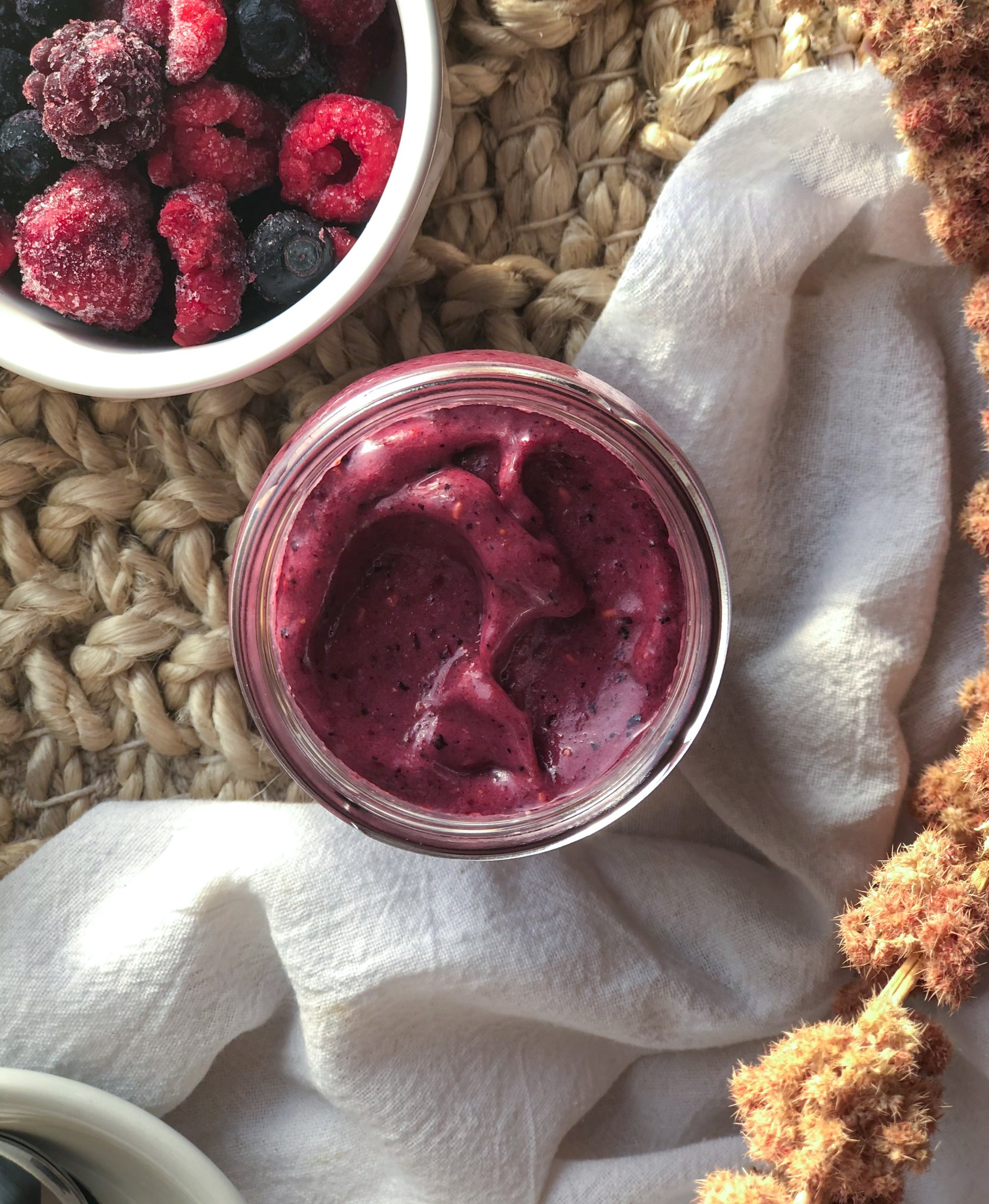Kombuchie (Kombucha Smoothie)
One of my favorite stands at the farmers market is the "kombucha lady," who sells shockingly effervescent kombucha in an array of seasonal flavors. From Peach Jalapeño to Elderberry to Ginger Lemon Turmeric -- you name it, she's kombucha'd it. And I've probably bought it.
Not only do I love locally brewed 'booch, but I also love smoothies that pack a tart punch. I usually use orange juice or raspberries to provide tartness in my smoothies, but this summer after a particularly fruitful kombucha run, I thought - why not add kombucha to my smoothie?
It was love at first spoon. The kombucha added even more pucker than my go-to orange juice, and made my average smoothie taste sparkly and special. To get the full effect of this smoothie, I recommend using a less sweet, more intensely vinegar-flavored kombucha. I have experimented with many different kombucha flavors in this smoothie and I’ve never met one I didn’t love, so feel free to experiment. If you don’t know where to start and don’t have a local kombucha seller, I recommend starting with GT’s Synergy Gingerade Kombucha (not sponsored). This kombucha is lightly gingery, not too sweet, and not too overpowering for kombucha beginners.
LET ME KNOW WHAT YOU THINK OF THE RECIPE AND DON'T FORGET TO FOLLOW THE SUSTAINABILITY TIPS BELOW!
Makes: 1 12-ounce smoothie
Time: 5 minutes
Ingredients
1 frozen banana
1 cup frozen mixed berries
2 tablespoons flaxseed meal
1 tablespoon almond butter
1 cup kombucha, any flavor
Methods
Place all ingredients in a blender and blend until smooth. Add more kombucha as needed to reach your desired consistency.
sustainability tips
Banana: Look for organic, fair-trade bananas. Organic means that no synthetic pesticides were used to grow your bananas and fair trade means that the banana plantation workers are getting a fair price for their crops and labor. Read all about it in my bananas sustainability profile!
Berries: Your best option is to grow the berries yourself, but local or organic fruits are another great option. Using local or homegrown berries saves energy and reduces greenhouse gas emissions because your produce won't have to travel far to get to you.


